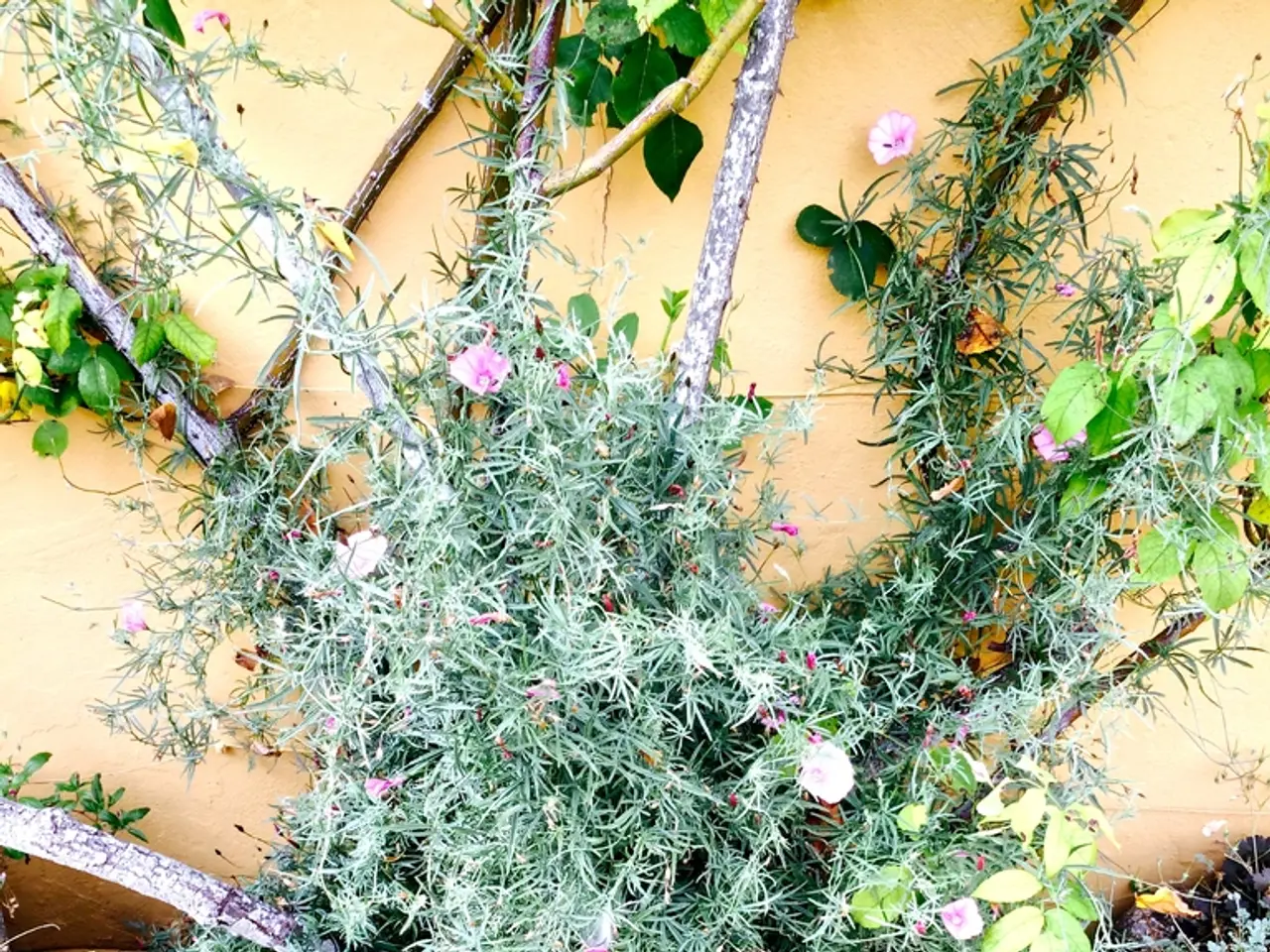Vibrant Blossoms: Isabel Bannerman highlights the cheerful, uplifting, and unpretentious winter flowers of the new year
Growing a Charming Early-Spring Display: Cyclamen coum and Winter Aconites
In the heart of the Mediterranean basin, cyclamen plants have been thriving for centuries, their tubers resembling 'cowpats' as described by Beth Chatto. These tuberous herbaceous perennials, particularly the hardy type known as Cyclamen coum, have found a new home in many British gardens, offering a delightful early-spring display when paired with winter aconites (Eranthis hyemalis).
Isabel Bannerman, a renowned British garden designer who was granted the Royal Warrant of His Majesty King Charles III in 2024, has championed the use of scented plants in her gardens. Her latest book, A Wilderness of Sweets: Making Gardens with Scented Plants, published by Pimpernel Press earlier this year, provides valuable insights into creating enchanting garden spaces.
To cultivate cyclamen coum and winter aconites together successfully, consider the following best practices:
Site Selection - Both prefer partial to full shade, especially dappled shade under deciduous trees or shrubs, mimicking their natural woodland habitat. - Well-drained, humus-rich soil is best. Both dislike waterlogged soil, which can cause bulbs to rot.
Planting Time - Winter aconites are usually planted as tubers or seeds in fall. - Cyclamen coum should be planted in early autumn for best blooms next late winter/early spring.
Planting Depth & Spacing - Plant cyclamen coum tubers about 5 cm (2 inches) deep, spacing them 8-10 cm apart. - Winter aconites should be planted at about 5 cm depth, spacing around 5-7 cm apart.
Companion Planting - Both naturalize well and can be interplanted in drifts or naturalistic clusters. - The staggered bloom of winter aconites (late winter) and Cyclamen coum (early spring) creates a continuous display. - Interplant with other shade-loving spring bulbs or early perennials like hellebores or snowdrops for variety.
Care During the Growing Season - Apply a light mulch in autumn to retain moisture and improve soil structure. - Water in dry periods while foliage is active. Both go dormant by late spring and prefer drier conditions at that stage. - A light application of balanced slow-release fertilizer in early autumn and again in late winter can support healthy growth.
Maintenance - Allow the foliage to die back naturally before removing it; this helps replenish bulb energy. - Divide and replant crowded clumps every 3-4 years in late summer or early autumn to avoid overcrowding. - Watch for pests like slugs, which can damage emerging shoots.
General Tips - Because both species prefer drier summers, plant them in spots that dry out by mid-summer. - Avoid heavy clay soils or areas of poor drainage. - Consider planting under deciduous shrubs or trees that provide shade in winter and early spring but allow light through as they leaf out.
By following these practices, you can enjoy a charming, early-season display of winter aconites’ bright yellow flowers paired with the delicate pink, white, or magenta cymes of Cyclamen coum, enlivening shady garden corners.
Interestingly, Lucian Freud repeatedly painted all parts and stages of the Cyclamen coum plants, while Jo Hynes and her family have devoted 30 years to growing 22 of the 23 known species of cyclamen at Higher Cheerubeere, Devon, which opens in February for the National Garden Scheme.
For more information about Isabel Bannerman and her work, visit bannermandesign.com. The miniature electric-pink and magenta flowers of Cyclamen coum are emerging in January, making this the perfect time to start planning your early-spring garden display.
- With proper care and suitable planting, you can create an enchanting early-spring garden lifestyle by incorporating scents and colors from Cyclamen coum and winter aconites, as suggested by Isabel Bannerman, a home-and-garden expert who specializes in gardening with scented plants.
- By emulating the strategies employed by renowned garden designer Isabel Bannerman, such as site selection, seasonal planting, and companion planting, you can enjoy a captivating home-and-garden display featuring the early blooms of Cyclamen coum and winter aconites in your shady garden spaces.





